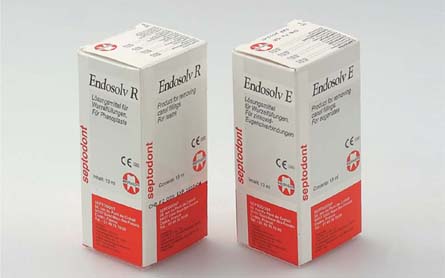15 Retreatment
Optimized endodontic re-treatment of a previous failed endodontic attempt by means of orthograde removal of the filling material and fresh endodontic therapy is, according to the literature, a more predictable and more successful treatment compared with a retrograde surgical approach in the form of apicectomy (Allen et al., 1989; Molven et al., 1991). This is even more clinically relevant and important now, as new technical aids, particularly the clinical microscope, have made orthograde endodontic revision carried out under direct vision simpler, more precise, and ultimately more successful.
In the past, use of the Hedström (H) file, often in combination with dissolving/irrigating solutions, was the method of choice (Hunter et al., 1991; Hansen, 1998). In addition to the clearly most effective (but also most dangerous) chloroform solutions, numerous other agents such as halothane, xylol, or orange oil were also available. Nevertheless, all of these chemical agents are to some extent toxic, they do not significantly improve root canal cleaning or shorten treatment time. They are a limited treatment adjunct in cases of an over-compacted root canal filling, or in severely curved canals, but such solutions are today, for the most part, of historical interest only (Schirrmeister, 2006).
15.1 Dissolving solutions
For many years now, scientists have been researching agents for dissolving previously placed root canal fillings. The most recent studies indicate that root canal filling material can be dissolved, but the efficiency is quite low while the toxicity of the solutions may be quite high (depicted: Endosolve R and E, Septodont, Saint-Maure-des Fossés, France).
Stay updated, free dental videos. Join our Telegram channel

VIDEdental - Online dental courses



